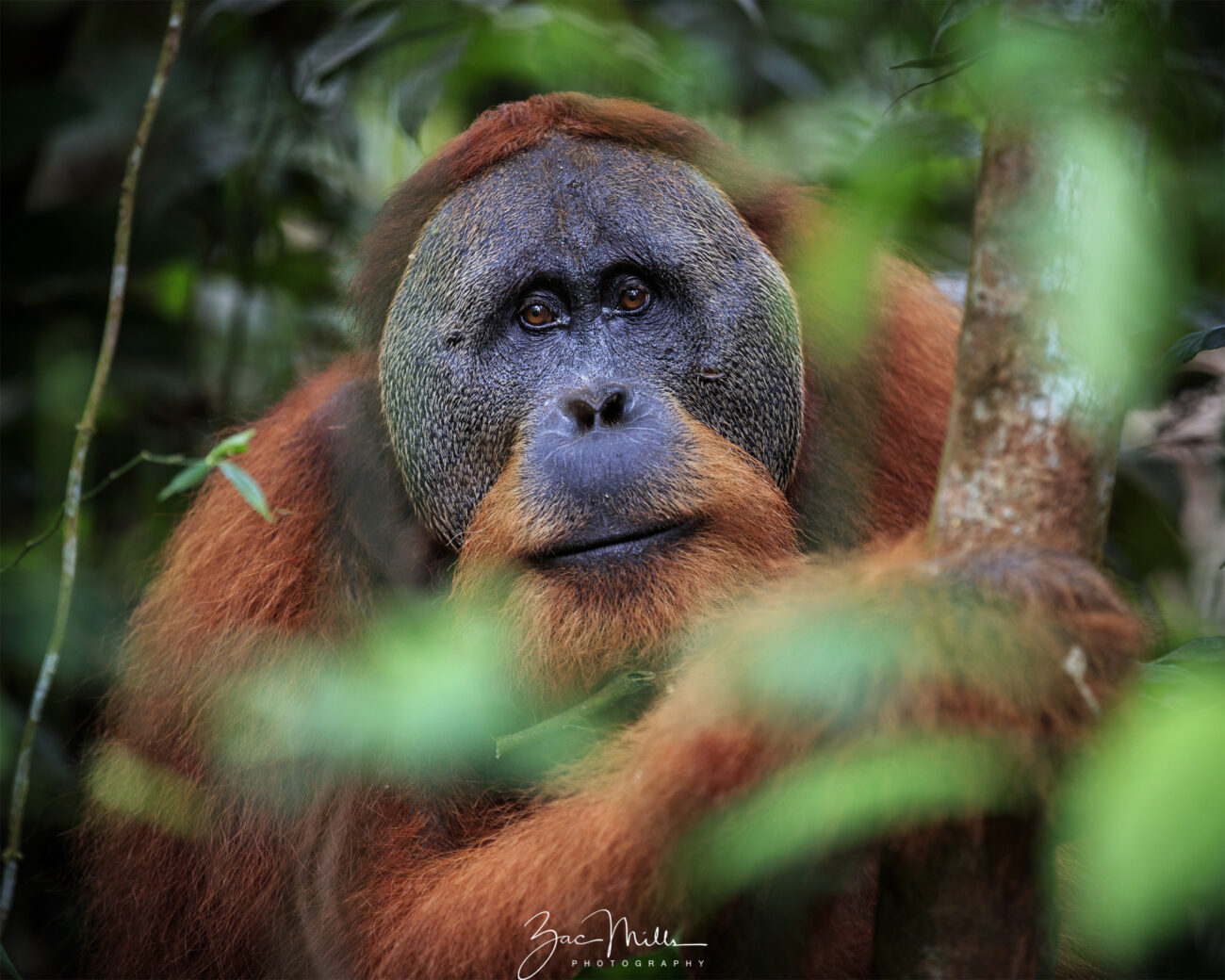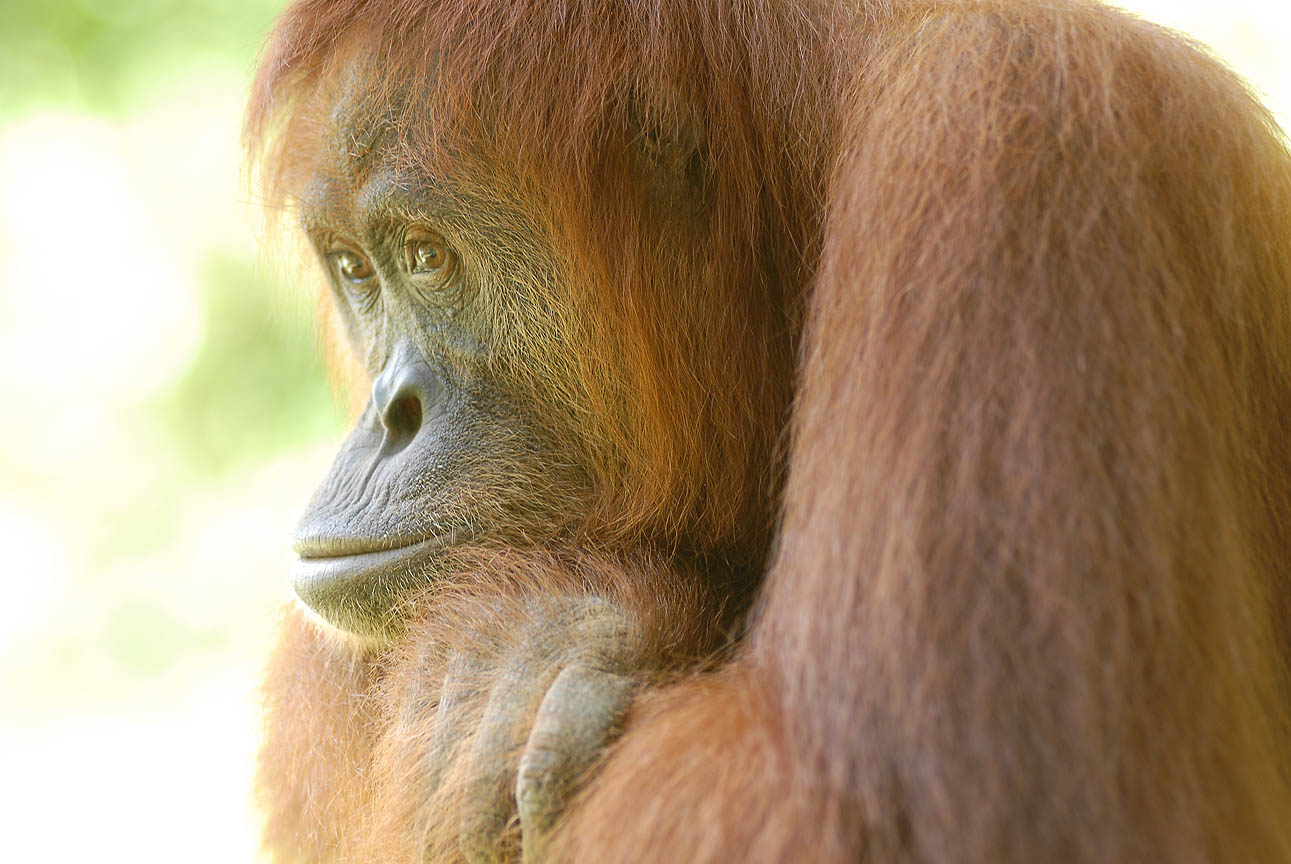
Photo credit: Zac Mills, the Wildlife Collective
Male orangutans look wildly different depending on whether they are flanged or unflanged. Flanged males are up to twice the size of unflanged males and have an enlarged throat sac and cheek flanges. Only flanged males are capable of producing the iconic long call.
There is a huge variation in flange development, with wild males developing flanges from ages 14 to 30. This transition is irreversible. Flanged males will fight, wound, or avoid each other completely. They are dominant over unflanged males, displacing them in courtship.
Flanged males in poor condition will show shriveled flanges and are referred to as “past-prime” males. They are rare, suggesting that this phase is not reached by all males and is likely short for those who do become past-prime. It also suggests that the flanged morph is costly to maintain.
So, why do males develop flanges? Research suggests that in Bornean orangutans, flanged males have higher reproductive success. But due to difficulties in measuring reproduction in wild orangutans, it’s unclear if the same is true for Sumatran orangutans.
The semi-solitary nature of orangutans and their fluid social groups means that one male cannot monopolise females. His presence doesn’t keep other males away entirely, but females will be less likely to encounter an unflanged male when associating with a flanged one.
This shows that female mate choice is important; they prefer to mate with flanged males when they are ovulating, and show willingness to mate with unflanged males when the risk of conception is low. This could be a paternity confusion strategy, reducing the likelihood of infanticide.
Overall, this study suggests that unflanged males are in a transitional stage. They are in a “waiting room” avoiding the costs associated with morphing into a flanged male and “making the best of a bad situation” until they are able to flange. But, not all males do morph into a flanged male.
Reference: Scott AM, Banes GL, Setiadi W, Saragih JR, Susanto TW, Mitra Setia T, Knott CD. Flanged males have higher reproductive success in a completely wild orangutan population. PLoS One. 2024 Feb 9;19(2):e0296688. doi: 10.1371/journal.pone.0296688.
You can help protect Sumatra's Orangutans. Click to get updates
